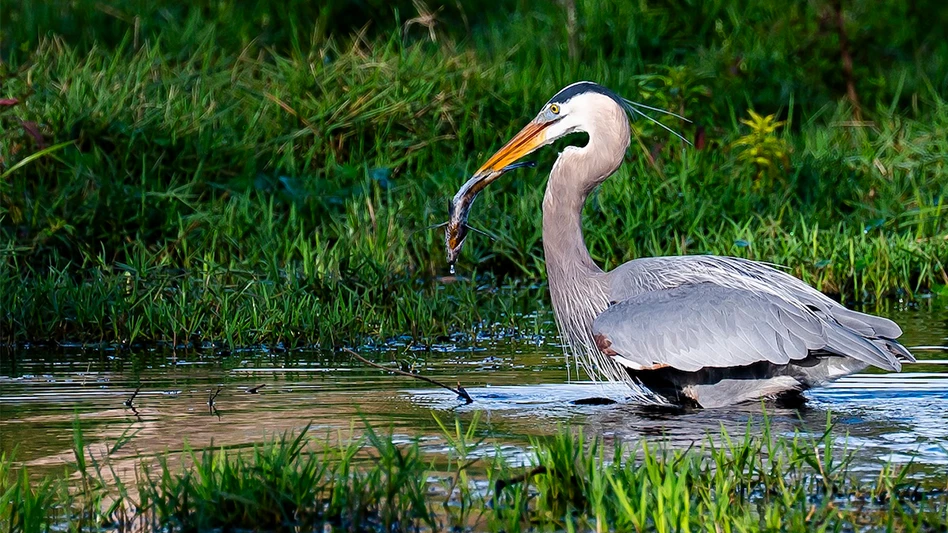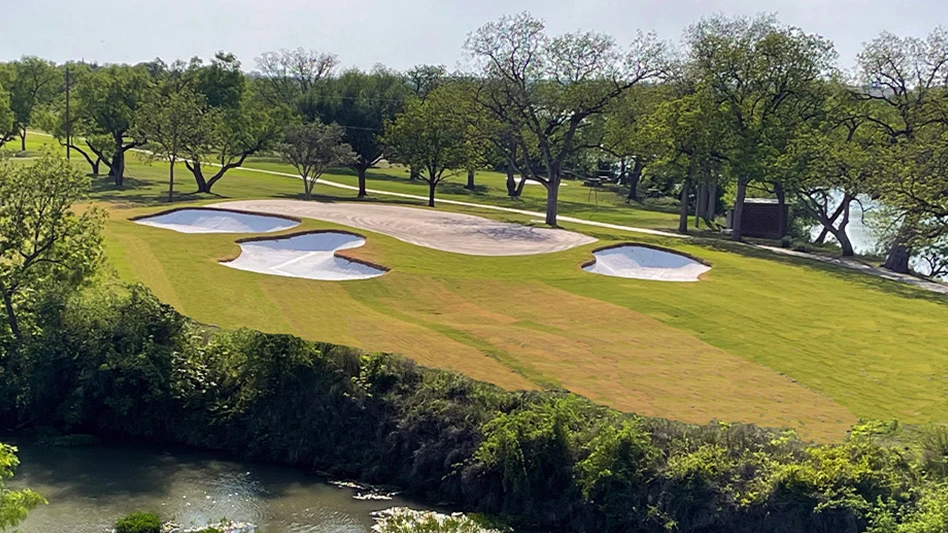
Golf Course Industry talked with Dr. Brandon Horvath, assistant professor, Turfgrass Pathology at the University of Tennessee to get his insight on new research on Pythium and what’s happening with identification, control and cultural practices.
We used to think of Pythium as a disease primarily on bentgrass, fairly easy to identify and manage. What has changed?
We now know that Pythium is a more diverse portfolio of diseases than we previously thought. Pythium blight mainly affected bentgrass. As more superintendents switched to the various ultra-dwarf Bermuda grasses we have discovered that Pythium problems are caused by numerous species, affect more grasses and have different symptoms and controls. The two primary additions are Pythium root rot which affects bentgrass and ultra-dwarf Bermuda grass and Pythium root dysfunction on bentgrass. We are also starting to see some of what is called Pythium patch appearing on annual bluegrass.
How are these diseases different?
First let me discuss their similarities. All the Pythiums produce swimming spores called zoospores that are mobile. They move with water, even within the soil solution. They are sometimes called water molds. They are easily spread with water. A pretty good indication of a Pythium disease is if the symptoms elongate down a slope. Pythiums are more closely related to algae than fungi, and are a very complex group.
Pythium blight is the most common and the most understood by superintendents. It is also the easiest to manage.
Frequently, the first symptoms of Pythium root rot are dry spots or irregular areas. It generally doesn’t occur in distinct patches. When you pull a plug and look at the roots, they will be much shorter than you’d expect. You may see a reddish brown coloration. They may have a macerated or water soaked look. The leaves may have blackish blue tissue that appears to be melting away. On bentgrass, it occurs in hot humid weather. On ultradwarf Bermuda grasses it occurs during cooler periods of cloudy, wet weather.
Pythium root dysfunction is often observed on creeping bentgrass in patches. They can have an elongated or irregular border. It is usually not circular. Plants turn yellowish-orange and areas start to die out. When a profile is pulled out of the ground you’ll see a shortened root system that has little or no root hairs. The soil just sloughs off the root system, where good roots with root hairs hold the soil or sand. The roots may also appear knotty or swollen under a magnifier or microscope. Research has shown that Pythium root dysfunction is most active in the cooler weather of spring and fall, but the symptoms and most damage occur as the weather warms up.
Pythium patch is starting to appear on annual bluegrass and looks a lot like summer patch. If both annual bluegrass and bentgrass are in the area, and the bluegrass is showing symptoms and the bentgrass is not, that is a further indication that the problem is Pythium patch, not summer patch. You can also look for the mycelium with a hand lens. It tends to be a problem on native push-up greens that have some top dressing and poor internal drainage.
The best way to know for sure what pathogen you are dealing with is to have it tested at a lab.
What are the conditions that are most conducive to the Pythiums?
Pythium blight and Pythium root rot tend to be more prevalent in high fertility situations. Pythium root dysfunction tends to be observed more in lower fertility situations.
Pythium blight is most prevalent when daytime temperatures are in the 80s and 90s and nighttime temperatures in the 70s and humidity is high (90 percent) for more than 12 hours. Young seedlings and areas being pushed on fertility are very susceptible. Those in the upper Midwest where there are surfaces pushed due to winter damage should be especially on the lookout.
What are the cultural practices to help in Pythium suppression?
Moisture management is really critical. Use a moisture meter to make sure the soil has its optimum moisture level. You don’t want too much or too little. Also monitor and manage nutrition, especially nitrogen. Find and maintain the optimum levels. Any time you can improve drainage and air flow it is going to be beneficial for reducing potential for Pythium diseases. If you have Pythium root rot or root dysfunction, raise the mowing height and back off on aggressive turfgrass operations to help the recovery.
We also talked with Dr. Jim Kerns, Turfgrass Pathologist, Department of Plant Pathology at North Carolina State University, who has done extensive research on Pythium for his insight on Pythium control.
What has your research shown as far as Pythium control is concerned?
These diseases can be problematic when there are prolonged periods of moisture followed by heat or cloudy weather. It is best to watch the forecasts and schedule a preventative fungicide application prior to when the weather develops. In some areas of the country, like the transition zone, multiple applications throughout the summer months are required to manage a disease like Pythium root rot. Because there are multiple species that can cause the disease, please rotate chemicals (Segway, Subdue MAXX, Banol, etc.) when managing them. This is critical to maintain adequate disease suppression and to prevent the development of resistance to the various chemistries.
Latest from Golf Course Industry
- PBI-Gordon promotes Jeff Marvin
- USGA investing $1 million into Western Pennsylvania public golf
- KemperSports taps new strategy EVP
- Audubon International marks Earth Day in growth mode
- Editor’s notebook: Do your part
- Greens with Envy 66: A Southern spring road trip
- GCSAA’s Rounds 4 Research auction begins
- Quali-Pro hires new technical services manager





